Table of Contents
Amazon River
The Amazon River is one of the most fascinating and important natural wonders of the world. It is the largest river in the world in terms of water volume, and it flows through the heart of South America, through Brazil, Peru, and Colombia. The Amazon River is a lifeline for millions of people and supports a vast array of plant and animal life. In this article, we will explore the many aspects of the Amazon River, from its geography and history to its ecological importance and cultural significance.
Amazon River: Geography
The Amazon River is approximately 4,000 miles long, with its source high in the Andes Mountains of Peru. From there, it winds its way through the dense rainforest of the Amazon basin, eventually emptying into the Atlantic Ocean. The Amazon River has an average width of 1.5 miles, although in some places it can reach up to 30 miles across. Its depth varies depending on the season, with the river rising significantly during the rainy season, which lasts from December to May.
Amazon River History
The Amazon River basin has been inhabited by humans for thousands of years, with evidence of human settlements dating back to at least 11,000 years ago. The indigenous people who have lived in the Amazon for millennia have developed sophisticated societies and cultures that are closely linked to the river’s rhythms and cycles. They have developed deep knowledge of the region’s flora and fauna, as well as advanced agricultural practices that have allowed them to thrive in a challenging environment.
In the 16th century, European explorers began to venture into the Amazon basin in search of gold and other valuable resources. The first European to navigate the Amazon River was the Spanish explorer Francisco de Orellana, who traveled down the river in 1541-42. The expedition was arduous and dangerous, with Orellana and his men facing treacherous rapids, fierce native tribes, and diseases like malaria and yellow fever. Despite these challenges, Orellana’s journey was a watershed moment in the history of the Amazon, as it opened up the region to European exploration and colonization.
Over the next few centuries, European powers, particularly Portugal and Spain, established colonies and trading posts along the Amazon River. These colonies were primarily focused on extracting valuable resources like rubber, gold, and timber from the region, often at great cost to the indigenous people and the environment. In the late 19th century, the rubber boom brought unprecedented wealth to the region, but it also led to widespread exploitation and abuse of the native population, as well as significant deforestation.
The 20th century brought new challenges and opportunities to the Amazon River region. In the mid-20th century, Brazil launched a massive development project aimed at harnessing the river’s power for electricity and irrigation. The project, known as the “Great Amazonian Plan,” involved the construction of a network of dams and canals that would have radically transformed the region’s ecology and economy. However, the project was ultimately scaled back due to environmental concerns and political opposition.
Amazon River Length
The Amazon River is the largest river in the world by volume and the second-longest river after the Nile. Its length has been a topic of debate and discussion for many years, with various measurements and estimates being made.
One of the biggest challenges in determining the length of the Amazon River is its complex network of tributaries, which stretch across much of South America. The Amazon River and its tributaries flow through several countries, including Peru, Brazil, Colombia, and Ecuador, making it difficult to measure its exact length.
Amazon River Length: Methods and Types of Lengths
- The most widely accepted length of the Amazon River is 6,400 km (3,977 miles). This measurement was taken in the 1970s and is based on satellite data and ground measurements. However, it is important to note that the length of the river can vary depending on the time of year and the location of the measurement.
- Another method used to measure the length of the Amazon River is to follow the river from its source in the Andes Mountains to its mouth at the Atlantic Ocean. However, this method can be challenging due to the many tributaries and changes in the river’s course. Some estimates using this method have put the length of the Amazon River at over 7,000 km (4,300 miles).
- It is also important to note that the length of the Amazon River is not a static measurement. The river is constantly changing, with new tributaries forming and old ones drying up. This means that any measurement of the Amazon River’s length is an estimate and subject to change.
Despite the challenges of measuring its length, the Amazon River remains an essential part of South America’s ecosystem and a vital resource for millions of people who rely on it for their livelihoods. The river is home to thousands of species of plants and animals, many of which are found nowhere else in the world. Its waters support the growth of crops and provide a source of transportation and energy for local communities.
Amazon River Location
The Amazon River is one of the most famous and important rivers in the world. It is located in South America and spans across several countries including Brazil, Peru, Colombia, Bolivia, Ecuador, Venezuela, Guyana, and Suriname. The river basin covers an area of approximately 7 million square kilometers and is home to an estimated 30 million people, making it one of the most densely populated areas in the world.
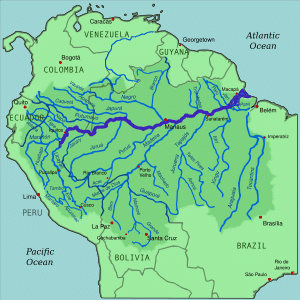
Amazon River Location: Origin
The Amazon River has its source in the Peruvian Andes, in the region of Cusco, where it is known as the Apurímac River. From there, it flows eastwards through the Andes until it reaches Brazil, where it merges with other rivers and begins to widen out. The river then continues its journey eastwards through the Brazilian rainforest, before flowing into the Atlantic Ocean near the city of Belem.
One of the most interesting things about the Amazon River is that it is the largest river in the world in terms of both volume and discharge. It carries more water than any other river on earth and is responsible for 20% of the world’s freshwater discharge into the oceans. In fact, at its widest point, the Amazon River can be up to 11 kilometers (7 miles) wide!
Amazon River Location: Importance to Environment
- The location of the Amazon River is also incredibly important for the environment.
- The Amazon rainforest is home to a diverse array of plant and animal species, many of which are found nowhere else on earth.
- The river is also an important transport route for goods and people, with many communities along its banks relying on it for their livelihoods.
- Unfortunately, the Amazon River is also under threat from deforestation, pollution, and climate change.
- The clearing of the rainforest for agriculture and mining is causing significant damage to the river and its ecosystem, while pollution from industry and sewage is also taking its toll.
- The effects of climate change are also being felt, with the river’s flow and water levels becoming increasingly unpredictable.
The location of the Amazon River is both fascinating and important. As the largest river in the world, it is responsible for a significant amount of the world’s freshwater discharge and plays a crucial role in the environment and economy of South America. However, it is also under threat from human activity, and urgent action is needed to protect this vital natural resource.
Amazon River Tributaries
The Amazon River, which is the largest river in the world in terms of discharge, is fed by a vast network of tributaries. These tributaries are not just a source of water for the Amazon, but they also play an important role in the ecological and cultural diversity of the region.
There are over 1,100 tributaries that flow into the Amazon, with some of the most important being the Madeira, Purus, Juruá, and Negro rivers. Each of these tributaries has unique characteristics that contribute to the overall complexity of the Amazon ecosystem.
Amazon River Tributaries: Madeira River
The Madeira River, which is the largest tributary of the Amazon, flows for over 3,200 km through Brazil, Bolivia, and Peru. It is home to over 800 species of fish, including the infamous piranha, and is an important waterway for transportation and commerce in the region. The river also plays a critical role in the hydrology of the Amazon, helping to regulate water levels and prevent flooding downstream.
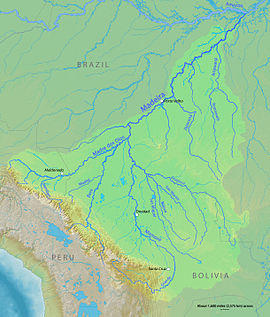
Amazon River Tributaries: Purus River
The Purus River, which flows for over 3,200 km through Brazil and Peru, is known for its stunning biodiversity. It is home to a vast array of plant and animal species, including jaguars, anacondas, and over 400 species of fish. The Purus River also serves as an important transportation route for the people who live along its banks, many of whom rely on fishing and agriculture for their livelihoods.
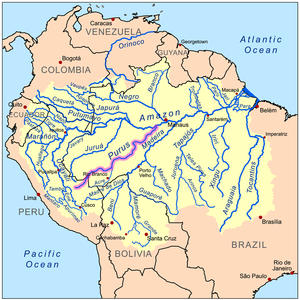
Amazon River Tributaries: Juruá River
The Juruá River, which flows for over 3,000 km through Brazil and Peru, is one of the most biodiverse regions on the planet. It is home to over 3,000 plant species, 500 bird species, and 200 species of mammals. The river also plays an important role in the lives of the indigenous communities who live along its banks, many of whom rely on the river for fishing and transportation.
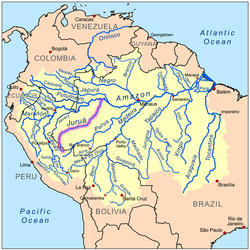
Amazon River Tributaries: Negro River
The Negro River, which flows for over 1,600 km through Brazil and Colombia, is known for its dark, almost black, waters. The river is home to a unique and diverse range of plant and animal species, many of which are not found anywhere else in the Amazon. The Negro River is also an important source of drinking water for the people who live in the region.
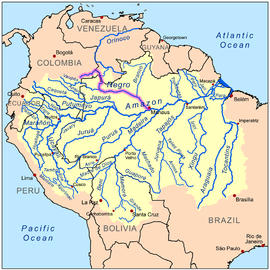
Also Read:
- Godavari River: Origin, Length, Tributaries, and More
- What is Ken-Betwa River Link project?
- Important Rivers in India: A List of Major River Systems for All Exams
- Kushiyara River Treaty
- Highest Mountain Ranges in India | List of All Famous Mountain Ranges with Map-State Wise
- List of Union Territories in India



 TSPSC Group 1 Question Paper 2024, Downl...
TSPSC Group 1 Question Paper 2024, Downl...
 TSPSC Group 1 Answer key 2024 Out, Downl...
TSPSC Group 1 Answer key 2024 Out, Downl...
 Cabinet Ministers of India 2024, New Cab...
Cabinet Ministers of India 2024, New Cab...







